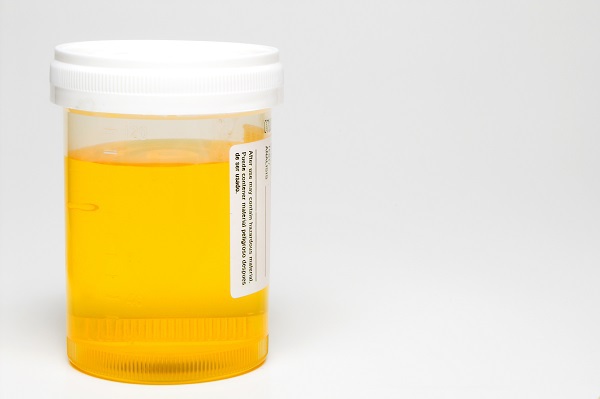The Science Behind Blood Alcohol Urine Tests

Along with breath and blood tests, urine tests can be used by law enforcement officers to measure blood alcohol levels. Scientists have found that urine tests inaccurately measure concentrations of ethanol, but they do show whether alcohol is present. Urine tests can be unreliable for a number of other reasons, but law enforcement continues to use them as an alternative to the more typical breath and blood tests. Urine tests also can show the presence of other drugs besides alcohol.
Like for blood testing, laboratories use gas chromatography-mass spectrometry (GC-MS) to detect ethanol levels in urine. Technicians run a sample through a gas chromatographs and a mass spectrometer, which when used together can show which chemical compounds are present in a sample. Ethanol is a chemical compound found in alcoholic beverages that is present in the urine after a person drinks alcohol.
The scientific test for ethanol in urine is inaccurate because there is a very wide range in the ratio of different people’s urine ethanol to blood alcohol level. In other words, some people may have very low BACs but a comparatively large concentration of ethanol in the urine, and some people may have lower levels, but there is so much variability in how different people test for these levels that urine test results could completely misinterpret how high a person’s BAC is. Ethanol levels in urine peak about 45 to 60 minutes after a person ingests alcohol and decrease quickly afterward. It is usually not detectable after 10 to 24 hours have passed. Further, different people’s bodies process alcohol at different rates. The length of time before someone is tested can affect whether his or her urine shows signs of ethanol.
There are additional problems with urine tests. False negative tests can result from alcohol volatility. Studies have shown that certain microbes, such as Candida albicans, produce a large amount of ethanol that shows up in a urine test, causing a false positive. High glucose content in urine, as occurs for people with diabetes, can cause a false positive. Finally, people who take urine tests have a tendency to water down the urine or swap out the test containers. As to watered down or swapped out urine, labs can test samples’ temperature to determine if they may have been altered. Labs may take two different samples 30 minutes apart and only use the second one for BAC measurement.
Recently, scientists have developed a method for detecting alcohol in the urine even after the 10 to 24 hour time range to test for ethanol has passed. The presence of ethyl glucuronide in the urine indicates that a person has ingested alcohol at some point in the last 3 to 5 days. Ethyl glucuronide is a metabolite of ethanol, meaning it forms as the body breaks down and processes ethanol from drinking alcohol. While many scientists are aware of the ability to test for this chemical, few labs perform the test on urine from drivers suspected of driving under the influence because it shows only that a person has ingested alcohol, not how much. Instead, if a urine sample result is unclear, police will try the other types of blood alcohol tests, blood and breath.
Have you been charged with a DUI in Oklahoma and don’t know where to turn? Seek out the attorney who knows the system. Clint Patterson, Esq., of Patterson Law Firm, a former Tulsa prosecutor now using his trial experience and expert-level knowledge of DUI science to defend drivers, has the experience and the insight to evaluate the strengths and weaknesses of your case. To schedule a case evaluation, visit Patterson Law Firm online or call Clint’s office at (918) 550-9175.

